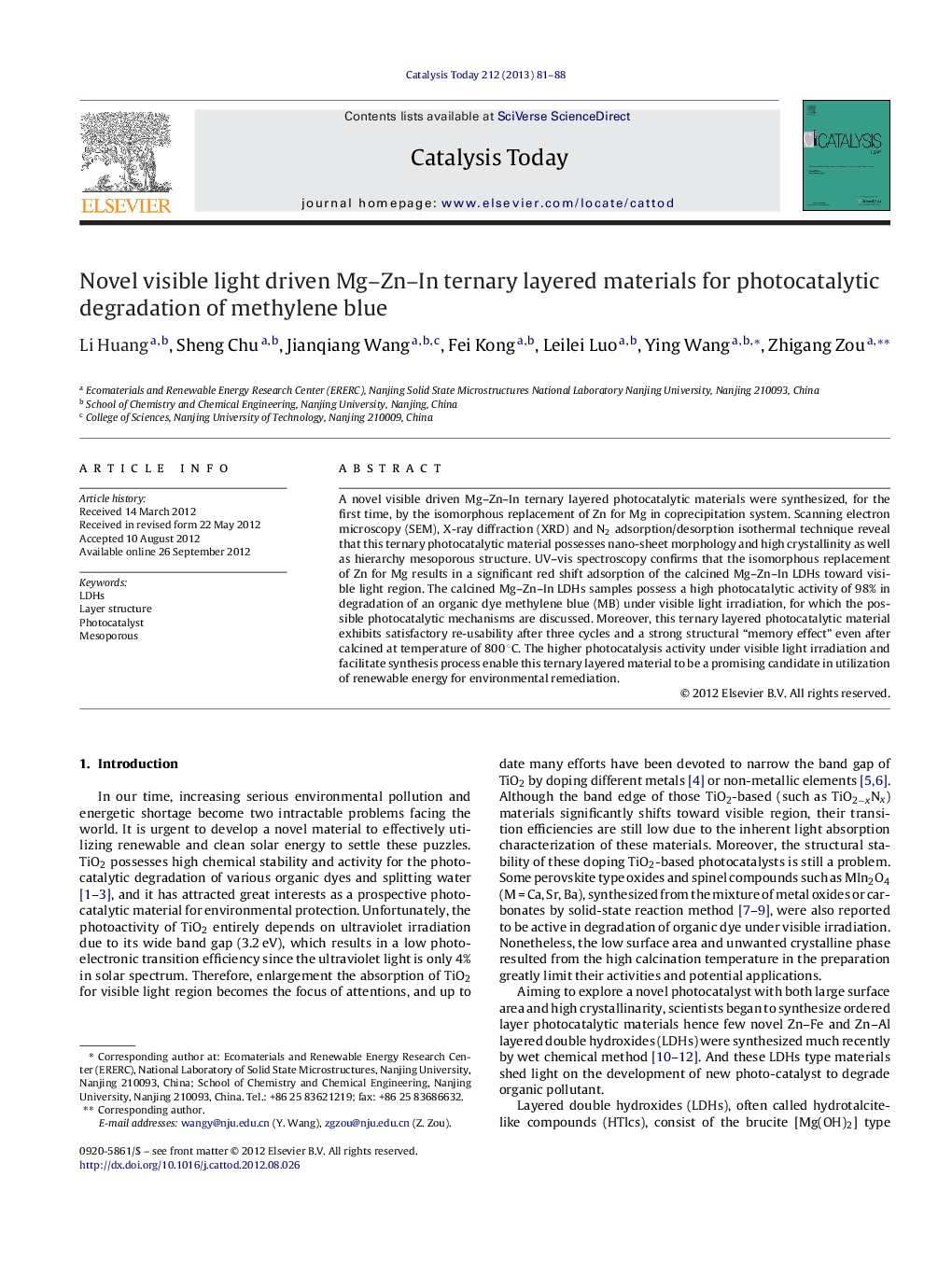| Article ID | Journal | Published Year | Pages | File Type |
|---|---|---|---|---|
| 54810 | Catalysis Today | 2013 | 8 Pages |
A novel visible driven Mg–Zn–In ternary layered photocatalytic materials were synthesized, for the first time, by the isomorphous replacement of Zn for Mg in coprecipitation system. Scanning electron microscopy (SEM), X-ray diffraction (XRD) and N2 adsorption/desorption isothermal technique reveal that this ternary photocatalytic material possesses nano-sheet morphology and high crystallinity as well as hierarchy mesoporous structure. UV–vis spectroscopy confirms that the isomorphous replacement of Zn for Mg results in a significant red shift adsorption of the calcined Mg–Zn–In LDHs toward visible light region. The calcined Mg–Zn–In LDHs samples possess a high photocatalytic activity of 98% in degradation of an organic dye methylene blue (MB) under visible light irradiation, for which the possible photocatalytic mechanisms are discussed. Moreover, this ternary layered photocatalytic material exhibits satisfactory re-usability after three cycles and a strong structural “memory effect” even after calcined at temperature of 800 °C. The higher photocatalysis activity under visible light irradiation and facilitate synthesis process enable this ternary layered material to be a promising candidate in utilization of renewable energy for environmental remediation.
Graphical abstractFigure optionsDownload full-size imageDownload high-quality image (115 K)Download as PowerPoint slideHighlights► Mg–In–Zn ternary photocatalytic material possesses nano-sheet morphology, high crystallinity and hierarchy mesoporous structure. ► The isomorphous replacement of Zn2+ for Mg2+ can modify the nano-size and morphology of the ternary photocatalytic material. ► Ternary photocatalytic material demonstrates excellent photocatalytic activity in the degradation of methylene blue under visible light irradiation. ► This ternary layered photocatalytic material exhibits satisfactory re-usability. ► Strong structural “memory effect” was found on Mg–In–Zn ternary photocatalytic material even after calcined at temperature of 800 °C.
